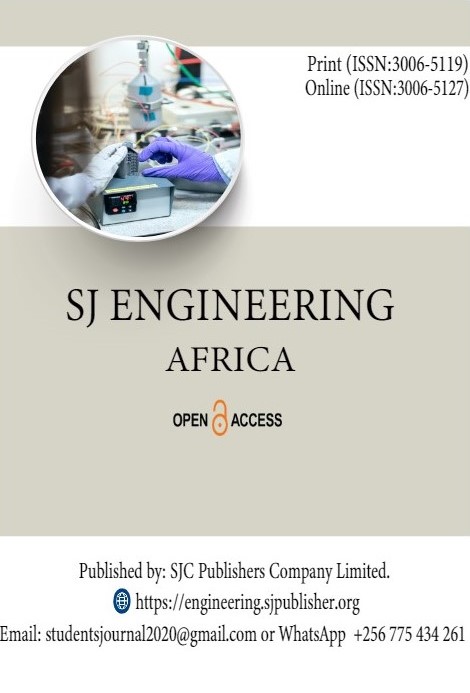A TECHNICAL REPORT ON THE DESIGN AND CONSTRUCTION OF A SMART WASTE BIN FOR MEDICAL WASTE MANAGEMENT
DOI:
https://doi.org/10.51168/5nh6de55Keywords:
Smart waste bins, Medical waste management, Waste storageAbstract
Our project is about the design and construction of a smart waste storage device as an immediate means to mitigate the problems associated with poor Medical waste management through sterilization.
Medical waste is waste generated during the diagnosis, treatment, and immunization of human beings or waste generated by healthcare establishments, research facilities, and laboratories. These medical wastes are categorized by level of infectiousness and their effects on human beings and the environment. For example, non-infectious waste is usually put in black disposal bins), infectious waste is usually put in yellow disposal bags or bins and highly infectious waste is usually disposed in red bins. The highly infectious wastes pose a greater degree of infection to persons who come into direct contact with such wastes. This infection can be bacterial, fungal, and viral infections, infections resulting from chemical spills and radioactive substances.
Depending on the volume and the type of medical waste generated, hospitals have several options when it comes to waste disposal. On-site as well as off-site options are available to some but before medical waste can be transported off the property of a medical waste generator, some of it must be properly treated to reduce or eliminate the infectious potential of that waste before it hits the road to its disposal location.
The pre-treatment not only reduces the volume of internal medical waste heading to landfills (as non-infectious or decontaminated waste) but also ensures a reduction or complete removal of potentially infectious materials found in the variety of the medical waste streams produced by the hospital. Two primary options applicable for pre-treatment or destruction of wastes for the hospital are incineration or autoclaving. However, the effectiveness of medical waste management using the available primary options in every health facility depends majorly on the awareness of the health personnel, waste management team, and the general fraternity of the hospital including the patients, availability of personal protective gear, internal and external regulatory framework, and financing organ.
In our project, the team focused on designing an automatic waste storage device. It operates in a way that when a person is within the set distance, a sensor outside the waste bin detects him/her and the lid opens automatically with the help of a motor that functions on the principle of servo mechanism.
Downloads
Published
Issue
Section
License
Copyright (c) 2024 Okethwengu Herbert, Amisiri Belinda, Emmanuel Ogwang (Author)

This work is licensed under a Creative Commons Attribution-NonCommercial-NoDerivatives 4.0 International License.

